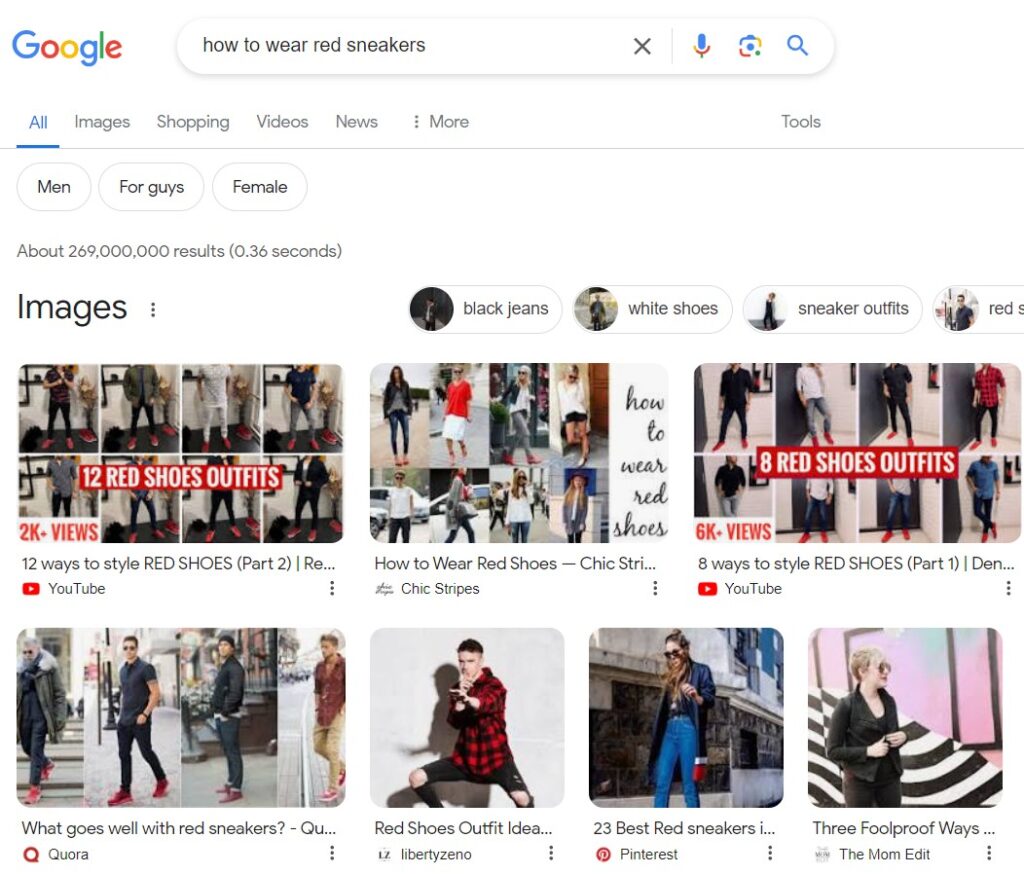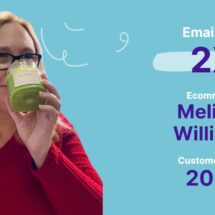How to create a blog content strategy in 4 steps
By Rhonda Bradley May 16, 2024
Who doesn’t want more traffic, quality leads, and sales to their blog?
The answer might surprise you.
More than 60% of marketers do not have a documented blog content strategy. Yet without one, their chances of success drop dramatically.
A blog content strategy is a written plan that guides content creation, publication, and distribution. It saves you time and energy, ensures that you stay on track with your goals, and guarantees that providing value to your target audience remains a priority.
Find out how to achieve your content marketing goals faster with our step-by-step process for creating a blog strategy below.
Key elements of a blog content strategy
A blog content strategy is a roadmap that guides your blog SEO strategy, content topics, themes, writing, scheduling, and promotional efforts.
A successful blog content strategy includes:
- A detailed description of your target audience
- Crystal-clear goals and KPIs
- Keyword and topic planning
- Timeline and content calendar
- Repurposing and promotional strategy
- A plan for maintaining content quality and consistency
A thoughtfully written strategy helps you drive the right kind of traffic to your blog, provide valuable content to your readers, and generate high-quality leads (or sales) for your business.
Taking the time to document your blog content strategy gives you an edge over the competition since most of your competitors probably don’t have one.
More than 60% of B2B and B2C marketers “wing it” without a written strategy.
How to create a blog content strategy in 4 steps
These steps will help you choose the right content for your blog and form a plan to publish, promote, and improve upon your content as you grow.
Step 1: Define your target audience and marketing goals
Defining your target audience and goals gives you the information you need to conduct effective keyword research and plan content themes for your blog.
How to define your target audience:
- Conduct audience research.
- Identify your target reader.
- List your readers’ pain points.
- Learn what type of content engages your readers.
Festoon House owner Matt Little, who manages content for his company’s blog, says that audience research is the key to a successful blog strategy. “I always start by researching and understanding who our audiences are, what they are interested in, and what problems they are trying to solve.”
“Remember, content is king, but the audience is the kingdom. Cater to them, and you’ll build a loyal following.”
– Matt Little, Owner, Festoon House

How to define marketing goals for your blog
Before you invest time and resources into blogging, make a prioritized list of your blog’s marketing goals.
What are the top goals for your blog?
Let’s assume the primary objective of any business blog is to provide valuable content to a target audience. Marketing goals are a separate entity.
👉 Marketing goals = What’s in it for you? 👈
Some of the most popular blog marketing goals are:
- Drive traffic to your website
- Generate leads
- Increase revenue
- Establish authority in your industry
- Increase brand awareness
Most blogs have several marketing goals. However, it’s important to prioritize them for your content marketing strategy.
What KPIs should you track for blogs?
Key performance indicators (KPIs) are insights that allow you to measure progress toward your content marketing goals.
If you’re new to KPIs and analytics, here are a few tips to help you get started.
How to measure the success of your blog:
Search traffic: Impressions, traffic, SERP position, click-through rate
Leads and conversions: Conversion rate, leads generated, revenue
Reader engagement: Bounce rate, average time on page, pages per session, social shares, scroll depth, returning visitors
Step 2: Conduct SEO keyword research
Keyword research helps you optimize your blog for search engines and develop relevant and valuable content for your audience.
Here’s a 4-step process for simple SEO keyword research.
A) Brainstorm relevant phrases and topics
Make a list of the phrases and keywords you think might be a good match for your audience.
Instead of simply copying ideas from your competitors, turn to your target audience for help brainstorming keywords that will attract quality readers.
Content and SEO manager Aleksa Filipovic recommends forging your own path when it comes to developing topic ideas. His blog on Measureschool has tripled its traffic over the past two years and now has 80,000 monthly readers.
“Turn to your target audience. Create surveys, look in online groups and communities, find out what your target audience is struggling with, and be the one with the answer. That way, you’ll find topics that can be covered and have no competition yet.”
– Aleksa Filipovic, Content & SEO Mgr, Measureschool
B) Conduct keyword and search intent research
Create a keyword database in Excel or Google Sheets where you will list the results of your keyword research.

Use a keyword research tool like Google Keyword Planner or SEMRush to investigate your list of relevant words and phrases. Look for low- or medium-competition keywords with a fair or decent amount of traffic.
When asked for her best tip on content marketing strategy, ButterflyMX Content Manager Katie Kistler stressed the importance of keyword research.
“Using tools like Ahrefs, SEMRush, or even the Google search engine results pages to source topics and keywords that your potential customers are looking for,” she explained, “is the most reliable way to create a high-performing blog quickly.”

C) Conduct search intent research
Before you add a keyword to your database, take a moment to ensure that your interpretation of it aligns with what searchers are looking for when they type it into Google Search.
The simplest way to do this is to drop the keyword into Google Search and view the results.
If the results produce informational resources (such as blog articles and guides) for a similar audience, you can add the keyword to your list.
For example, people searching for “red sneakers” usually want to shop for shoes, not read a blog post about them.

If the search intent doesn’t match, take a moment to experiment with more refined keywords.
For example, a quick search on “How to wear red sneakers” produces fashion tips, which is ideal if your blog post is about red sneaker fashion.

As you choose keywords for your blog, consider your niche and try to narrow your phrases to fit a more specific audience. This will help you reach the right people and give you a better chance of ranking well on the Search Engine Results Pages (SERPs).
D) Choose the main keywords you’d like your blog to rank for
You’ll use your top keywords to create “pillar” style articles that act as a main guide for a broad topic.
All of your other blog articles will link to one related pillar article.
This pillar content approach is not required, but it’s very helpful to your SEO strategy.
Step 3: Create a blog content calendar and timeline
Now that you’ve created a keyword database, you can begin planning your blog’s content.
A) Create a content timeline
A content timeline outlines the themes you’ll use throughout the year, such as:
- Holiday and seasonal campaigns
- Company marketing campaigns
- Upcoming events
- Content that resonates with your audience at certain times of the year
For example, the (fictitious) Red Hot Shoes company might create a timeline like this:
Month 1: February (Focus: Valentine’s Day & Comfort)
- Theme 1: Rock Your Reds for Valentine’s Day:
- Posts: Styling tips for creating romantic red shoe looks, gift guide featuring red shoes, history of red shoes in fashion and romance.
- Theme 2: Cozy Comfort in Red:
- Posts: Highlight red slippers, sneakers, or boots; perfect for lounging at home, tips for keeping red shoes clean and comfortable.
Month 2: March (Focus: Spring & Awareness)
- Theme 1: Spring into Style with Red Shoes:
- Posts: Showcase new spring shoe collections with a focus on red colors, tips for transitioning your wardrobe to spring featuring red shoes.
- Theme 2: Red Shoe Confidence Campaign (optional): (Align with a marketing campaign)
- Posts: Partner with influencers or customers to share stories about how red shoes boost confidence, launch a user-generated content contest featuring red shoes.
B) Create a content calendar
Content calendars help keep you and your team on track.
- Decide how often you’ll publish.
- Plan your blog posts for the next four weeks and put them in your calendar.
Here’s an example of a simple blog content calendar created with Google Sheets:

Avoid planning content more than 4-6 weeks in advance. This gives you the creative freedom to adjust after viewing your blog metrics or reacting to industry updates that could affect audience sentiment.
For example, if a major political figure suddenly goes viral for wearing red sneakers, you would need to consider how that might affect your approach to content.
Step 4: Create a blog repurposing strategy
The days of pushing out massive amounts of blog content, regardless of quality, are gone.
Instead of forcing yourself or your team to produce volume over value, focus on publishing high-quality content at a steady pace that works well for everyone.
Then, repurpose your blog content so you can use it to the fullest extent!
High-value blog posts are packed with gems such as stories, statistics, quotes, and lists.
You can pull these valuable snippets from your posts to create more content and promote your blog on social media and in newsletters.
11 ways to repurpose high-quality blog posts
- Videos
- Social media image posts
- Social media Stories
- Social media video shorts
- Quizzes
- Posts
- Meme
- GIFs
- Podcasts
- Infographics
- Email newsletters
How to drive traffic to your blog
Repurposing blog posts using the tips above will handle most of the heavy lifting when it comes to driving traffic to your blog. All you need to do is share your repurposed content on social media.
5 ways to drive more traffic to your blog posts:
- Share your repurposed blog content on social media.
- Share a preview in your email newsletter.
- Set up an automated blog newsletter so that every time you publish an article, an email goes out to your newsletter subscribers to let them know about it.
- Run social media contests and drawings that drive people to your posts.
- Partner with influencers to promote your blog.
Additionally, you can further position yourself or your company as an industry authority, which will drive more traffic to your blog.
Creating podcasts, publishing books, conducting webinars, and forming a social group/forum are excellent ways to boost authority in your industry.
Establish standardized blog guidelines
As you develop your content marketing strategy, it’s a good idea to consider how you’ll maintain quality and consistency over time.
Establish your brand voice and tone
Develop brand voice guidelines and determine how you’ll optimize content for your audience.
In a recent chat with Backlinko SEO Lead Leigh McKenzie, he explained that developing an authentic brand voice is key to connecting with readers.

“Backlinko’s blog strategy is focused on nailing an authentic writing voice that resonates with readers.
As we grow our team, we tap into expertise but present it conversationally – not generic fluff.
Writing in second person or first-person plural creates an inclusive, one-on-one tone connecting our authority with readers naturally.”
– Leigh McKenzie, SEO Lead, Backlinko
In the YouTube Short below, Brian Dean explains some of the ways you can optimize your content for readers.
Dean advises creating skimmable blog posts with frontloaded value to improve your reader’s experience.
How to standardize blog quality and consistency
To consistently create high-quality content, you must standardize some elements of the blogging process.
You can achieve this by creating materials such as:
- Brand manual: Includes information that helps writers represent and promote your company and its products, such as:
- A guide to your brand and its products, including a detailed description of your target audience and readers.
- Your company’s key differentiators and primary message(s)
- A list of competitors you do not want to link to.
- Blog article checklist: A list of the formatting, processes, and elements you expect with each blog post.
- Number of CTA’s.
- The minimum number of media, statistics, quotes, and other engaging or interactive elements required in each piece.
- A list of finishing tools to use before submission, such as:
- Grammarly
- Copyscape
- Headline Capitalizer
- Blog writing guidelines
- A guide to your key blog requirements, such as formatting, SEO requirements, source and linking guidelines, and AI policies.
- Blog post templates
As you develop content standards, keep in mind that providing value to your audience is top priority.
Chief Content Marketing Officer Ben Jacobson of Inbound Junction says blog strategists should be careful not to forget their audience when planning content.
“There are two mistakes that I see many businesses making with their blog content strategies that really get under my skin nowadays, and these two issues are related.
One is using the blog as a pure SEO play, where getting pages to rank for keywords is the only objective.
The other is using the blog as a pure product marketing platform, where convincing readers to convert is the only objective.”
The ongoing process of blog content strategy
In this guide, we’ve covered the basics of how to create a blog content strategy.
Strategy is a fluid process that ebbs and flows with time. Don’t hesitate to change or adjust it as you view its metrics and get feedback from your audience.
For a surefire way to encourage readers to return for new blog articles, encourage them to sign up for your email newsletter.
At AWeber, we provide you with all the email marketing tools you need to effectively promote your blog in as little time as possible.
From automated blog newsletters to templates, AI writing assistance, and automation, we make it simpler than ever for you to nurture your audience and send more traffic to your blog.
Sign up for a free AWeber account today and begin promoting your blog without delay.
 87% off ends soon!
87% off ends soon! 
